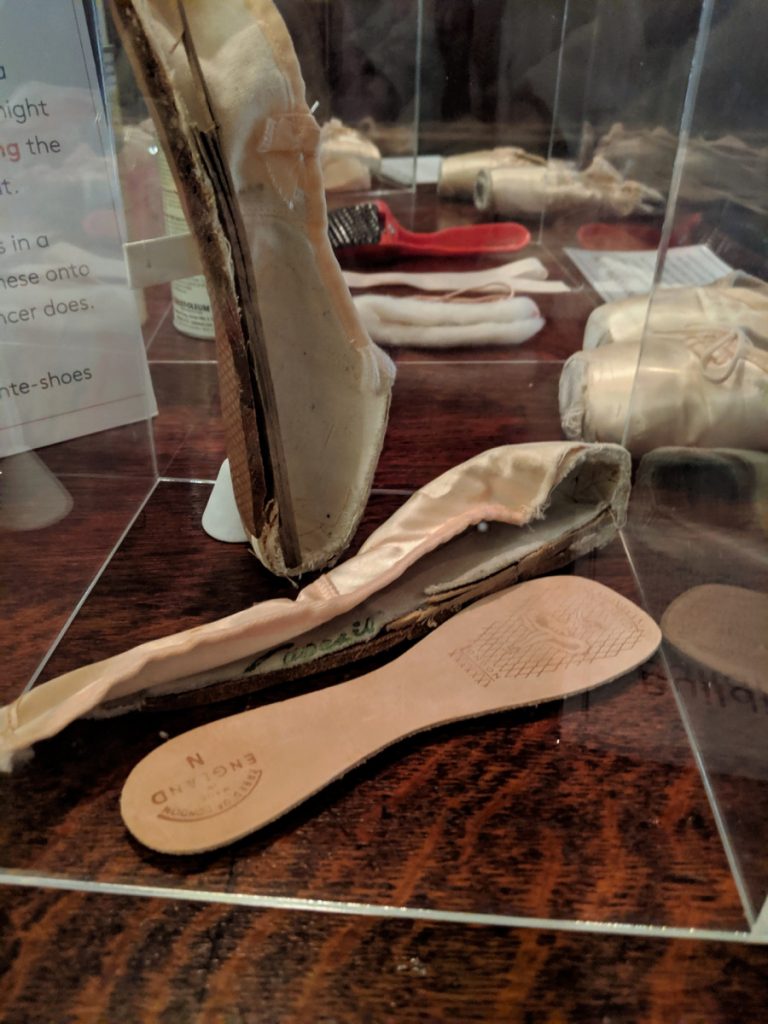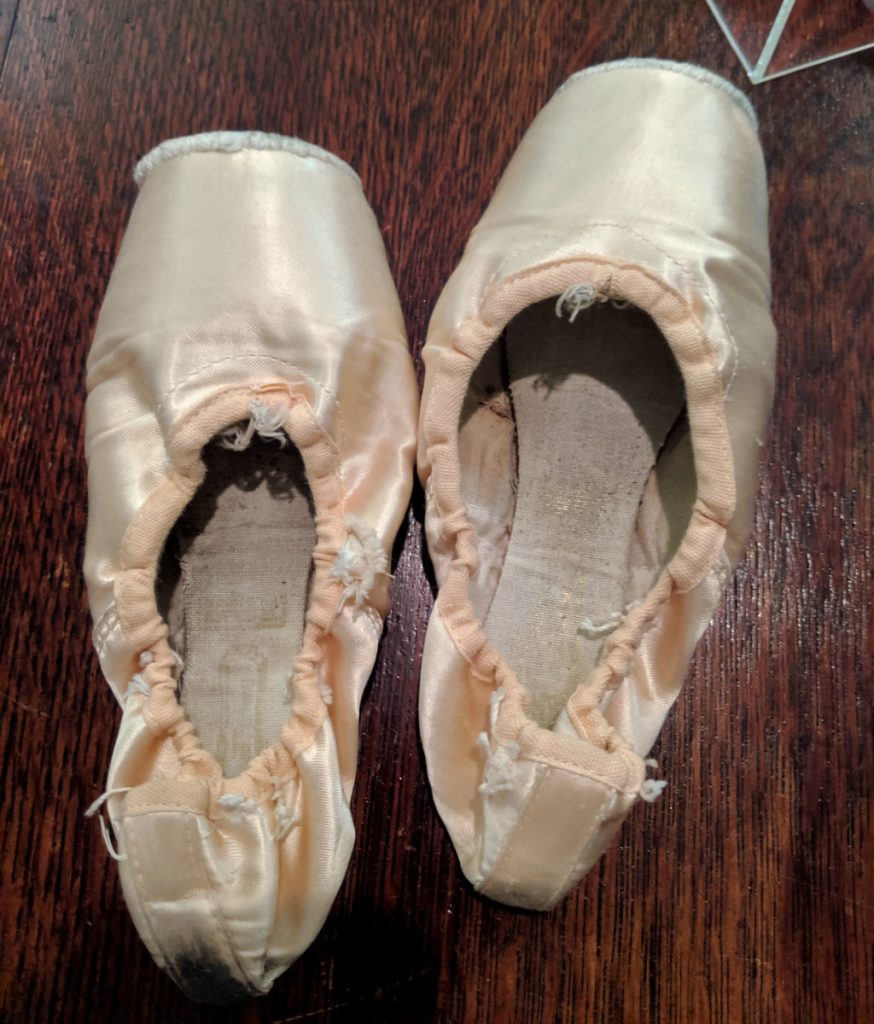Ballet comes in many forms; romantic, contemporary, neoclassical, to name a few. Rhapsody, Boston Ballet’s mixed-repertoire season closer is a little like Ballet Buffet – there’s something for everyone! And trust me, it is utterly delicious!
On May 16th, I had the pleasure of attending Rhapsody with budding ballet enthusiast, my son, 7-7ear old Vincent. Before we even delve into how much we both loved the performances, let’s discuss the pre-game.
Arriving at the Boston Opera House with a little bit of time to kill before the performance is important not only to buy beverages and any goodies but also to see the different interactive exhibits. One of Vincent’s favorite’s is the free postcard station, where he can send a Boston Ballet postcard to a family member or friend.
He also really enjoyed trying the different ballet positions, as you can see!
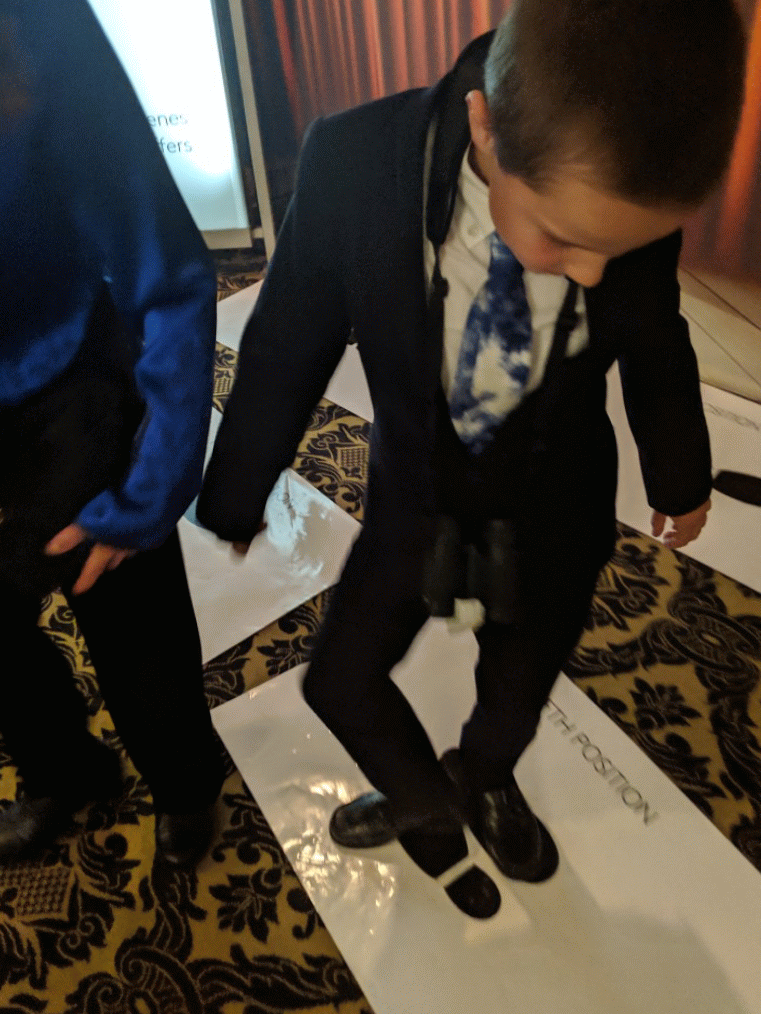
As a shoe freak, I moseyed over to the pointe shoe display to take a look at the inside construction that allows ballerinas to reach such elegant poses. A hard-line of cardboard running perpendicular to the soul of the foot provides support for when “on pointe.” And, they certainly are putting the shoes to use. Dancers at Boston Ballet go through about 9,000 pair a season!
Back to the performance. We eventually made our way to our seats, ready for Rhapsody, which consists of Yakobson Miniatures; Ela, Rhapsody in Blue: and Tchaikovsky Piano Concerto No. 2.
Yakobson Miniatures
Ballet was invented in Italy in 1459 and nurtured in France over the next few centuries. But, quite often, it is the Soviets who comes to mind when one thinks of ballet.
Leonid Yakobson was a Russian choreographer and dancer who used ballet to comment on social and political issues from the 1930’s until he passed away in 1975. In Rhapsody, we see Boston Ballet Premier three of Yakobson’s miniatures: Pas de Quarte, Rodin, and Vestris.
Pas de Quarte
The curtain opens to Pas de Quarte, a romantic ballet that intertwines four ballerinas in a light dance that was perfect of the spring evening performance. Yakobson reworked this 19th-century ballet and united the dancers to create unity, rather than the competition that often existed between pointe dancers.
After seeing the pointe shoe exhibit, I took careful note of how often the dancers were on their toes. My goodness, the strength these women have in their legs! On top of the mental and physical strength, they have the most beautiful smiles during the performance – smiles that come from pure passion and love for the dance. These days, I can barely manage a smile wearing a pair of wedges. So, I was thoroughly impressed.
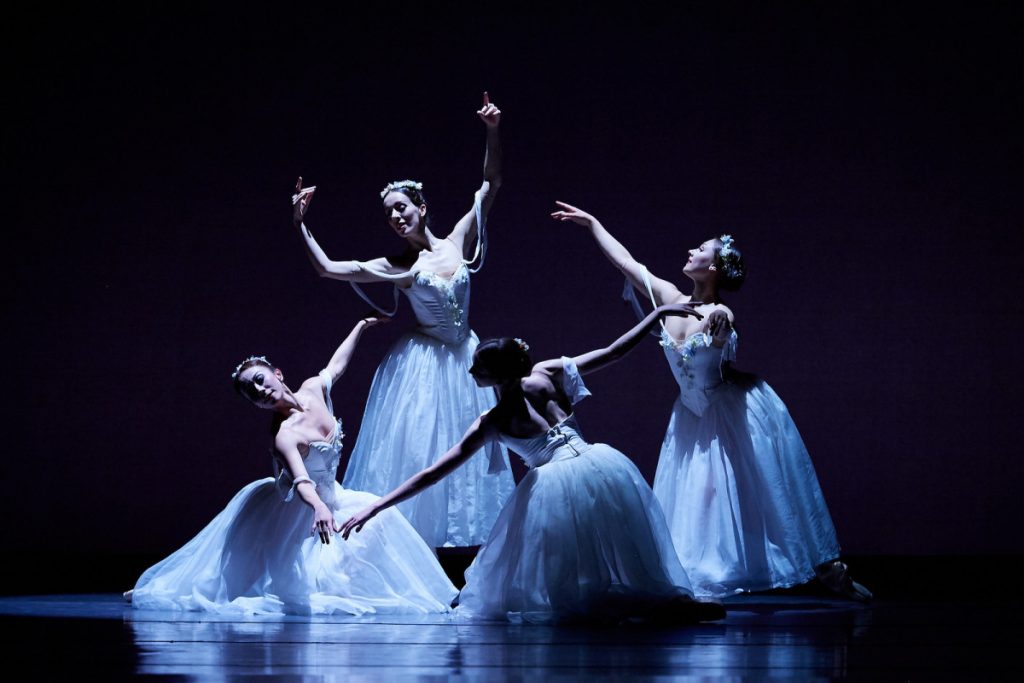
Boston Ballet in Leonid Yakobson’s Pas de Quartre; photo by Rachel Neville Photography; courtesy of Boston Ballet
Rodin
Inspired by French sculpture Auguste Rodin, Yakobson uses dance to expose the beauty of young and mature love, passion, and also the intensity and violence that can come from lust. The last of the four dances was cited as having “mature content.”
I consulted with Boston Ballet before bringing Vincent, and we all agreed the “mature content” was subtle and interpretive.
The little guy didn’t pick up on any of the eroticism, seeing as how he doesn’t know what that even is. In all honesty, what he likes about the ballet is the athleticism – high jumps, never-ending spins, and all the other amazing moves Boston Ballet’s company do effortlessly.
For anyone who is considering taking a child of any age, my advice is the value of exposing our youth to the movement and music (Debussy) in Rodin far outweighs the “mature content.” In fact, it could help to breach a seemingly unapproachable discussion with a teenager.
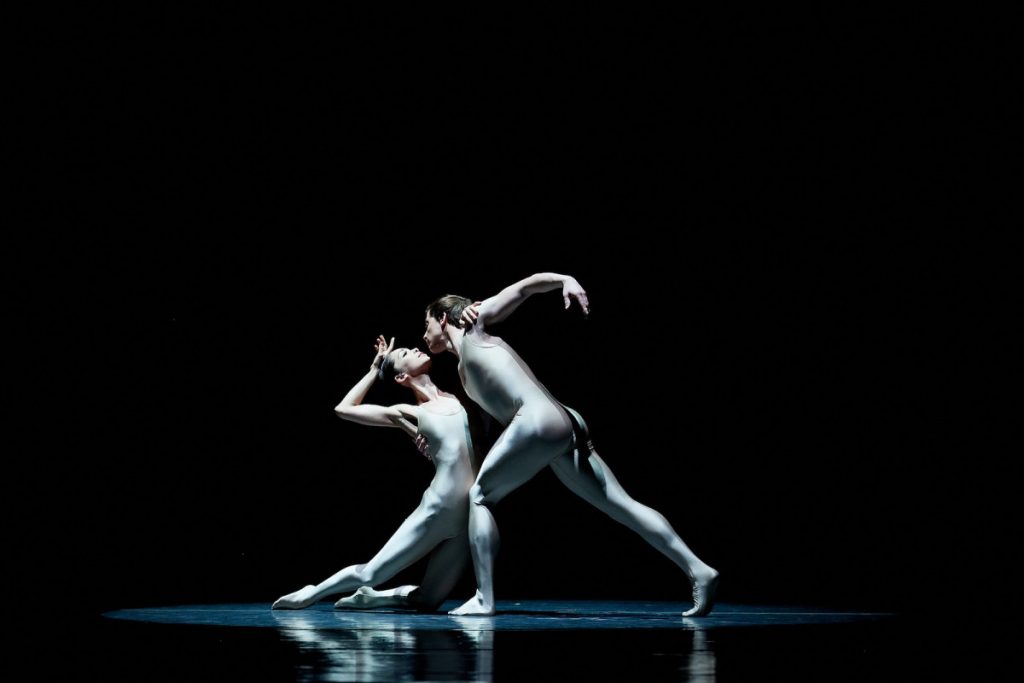
Corina Gill and Isaac Akiba in Leonid Yakobson’s Rodin; photo by Rachel Neville Photography; courtesy of Boston Ballet
Vestris
If you’re one of those people who thinks of Russia when you think of ballet, then you also probably think of the international ballet star, Mikhail Baryshnikov. I loved learning Yakobson created this solo dance for a young Baryshnikov.
I also love how it lightened the mood. Derek Dunn danced the comedic and theatrical piece as if it might have been made for him as well.
It’s pretty special when choreography and a dancer can make an audience laugh during a ballet- don’t you think?
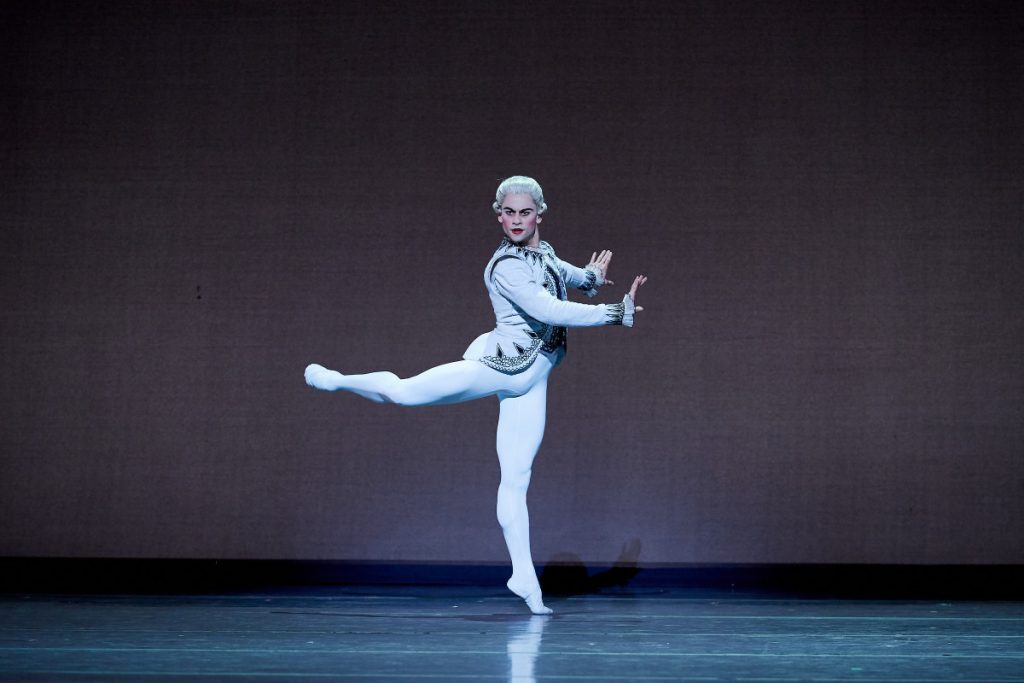
Derek Dunn in Leonid Yakobson’s Vestris; photo by Rachel Neville Photography; courtesy of Boston Balle
ELA, Rhapsody in Blue
I was pretty excited about ELA, and with good reason; it was the World Premiere choreography by Brazilian National and Boston Ballet Principal Dancer, Paulo Arrais. How freaking cool is that?
More like awesome.
First of all, I’m a huge fan of Fred Astaire-type shows. Set to Gershwin’s Rhapsody in Blue, the aesthetics of it all took me back to the days as a little girl when I would sit on the couch next to my Nana and watch the old school musicals. Vincent, who had hinted he might be a little tired and want to go home, leaned over and said, “I love this one. I’m glad we stayed.”
Me too Vincent!
For Vincent, he loved the smokey stage, choreography, and of course, a song and composer that every generation should know.
This was another piece with mature undertones. An homage from Arrais to the positive female influences in his life, ELA shows the strength and ability of a woman to overcome oppressive male dominance. Bravo!
I had a chance to inquire how Arrais feels about being the choreographer and not the dancer. His answer was, “I am deeply connected to dance; it is like a relationship! It has been 21 years, and this relationship still new and fresh.”
With ELA, Rhapsody in Blue, it’s clear the relationship is nowhere near ever being on the fritz.
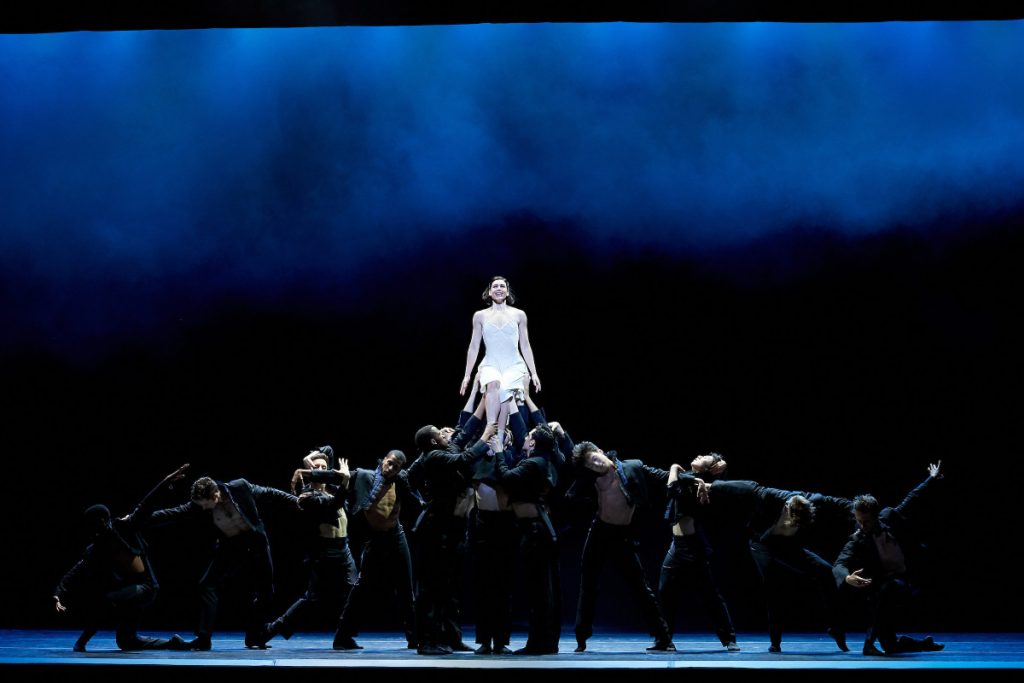
Kathleen Breen Combes and Boston Ballet in Paulo Arrais’s ELA, Rhapsody in Blue; photo by Rachel Neville Photography; courtesy of Boston Ballet
Tchaikovsky Piano Concerto No. 2
George Balanchine, the epitomes classic ballet choreographer, has created some 500 dances, including our beloved Nutcracker. Among those was a piece once known as the Ballet Imperial.
The Ballet Imperial honored classical ballet and all of its bells and whistles. However, Balanchine eventually reworked the piece into a neoclassical performance that removed any frills and lace making the choreography the focus. A name change to the musical accompaniment, Tchaikovsky Piano Concerto No. 2, solidified the performance as a piece that is about the dance.
It’s a grand performance that ends the Boston Ballet’s 2018-2019 with synchrony to delight your senses!
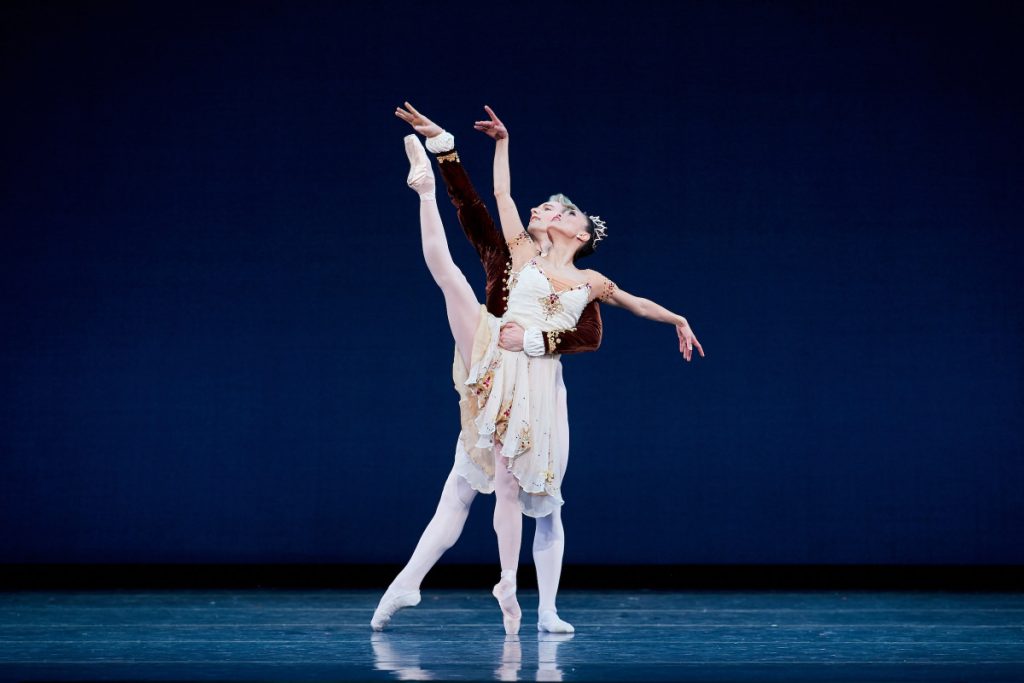
Patrick Yocum and Lia Cirio in George Balanchine’s Tchaikovsky Piano Concerto No.2 © The George Balanchine Trust; photo by Rachel Neville Photography, courtesy of Boston Ballet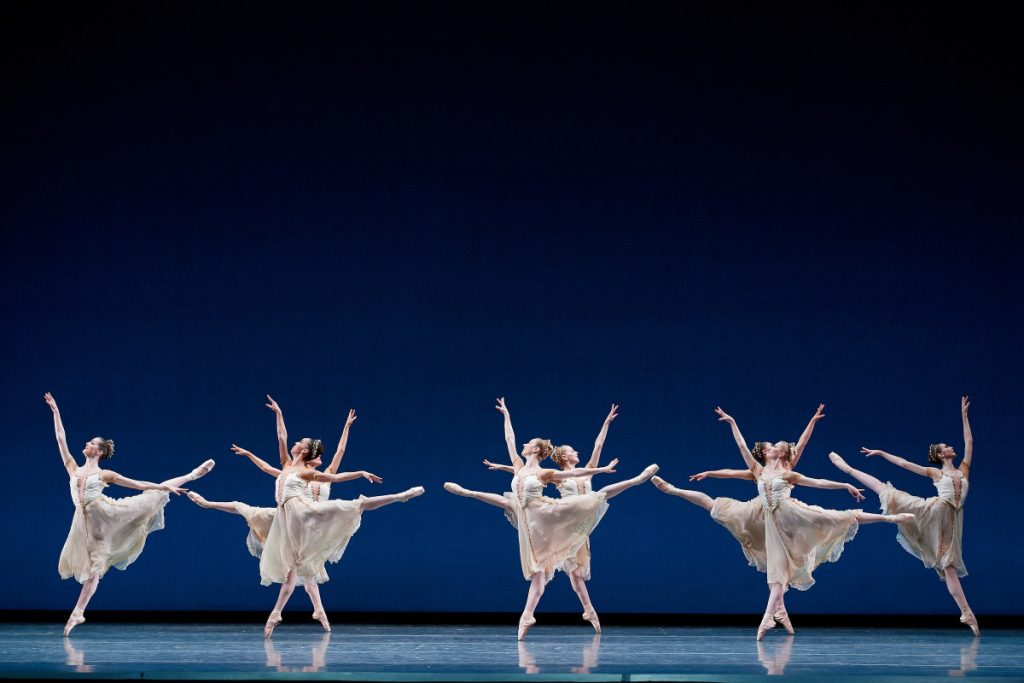
Boston Ballet in George Balanchine’s Tchaikovsky Piano Concerto No.2 © The George Balanchine Trust; photo by Rachel Neville Photography, courtesy of Boston Ballet
Rhapsody plays through June 9th. Get your tickets HERE.
Consider Donating To The Boston Ballet – HERE.


